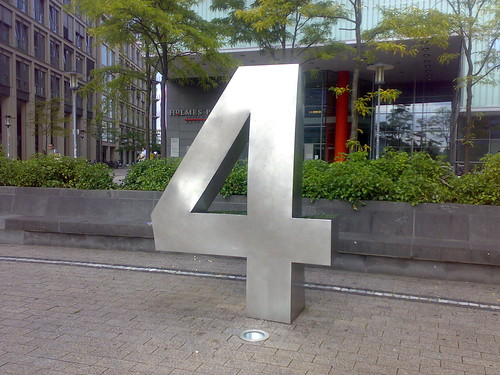 It still has me shaking my head in disbelief.
It still has me shaking my head in disbelief.
The article in question: "The Eight Best Physical Therapy Methods Explained". It first appeared on greatist.com and then, lo and behold, made an appearance on Huffington Post. An article on physical therapy? An attempt to summarize, for the mass populace, what we do in our profession? Consumer awareness and a little publicity?
That has to be a good thing. Or is it?
Ugh.
If that is what my profession brings to the health care table, then I am seriously disappointed and disheartened - not just for the consumer, but for the profession as a whole.
It started out well enough - with the importance of a thorough physical therapy evaluation. But when the article entered into the world of treatment, things got messy:
"... therapists will begin to lay out a treatment plan, which will commonly include passive modalities (ice, heat, laser therapy, and electrical stimulation to name a few)."
Oh boy, here we go. Passive modalities? They are so 1990. Haven't we put those on the sidelines yet? My heart rate was going up. Big breath. Surely it must get better ... let's read on ...
The eight best physical therapy methods, according to the article, are as follows -
1. Manual therapy: "This hands-on approach separates physical therapists from other health practitioners". Actually, it puts physical therapists in the same category as many other manual therapy practitioners including massage therapists, chiropractors, etc - but I digress.
2. Ice: This assumes, of course, that there is an active inflammatory process taking place that needs to be mediated in the first place. Big assumption.
3. Heat: What ever happened to increasing your core temperature with activity?
4 & 5. Ultrasound/Low-Level Laser: "Best for connective tissue injuries". Check the supportive literature and get back to me. Connective tissue and muscle require mechanical loading in the repair and remodeling phases - which start at about 2 to 3 days post-injury.
6. Traction: As far as I know, to this point, traction has yet to be supported in any clinical guideline worldwide for the treatment of low back pain.
7. Functional Electrical Stimulation: It may have some limited value if you are unable to attain a muscular contraction; however, once you are able to do so, mechanical loading and resistance is imperative to restore muscular strength.
Oh, but wait. We have this one as well -
8. Exercise: "... hand-picked to help patients move better by strengthening targeted muscles". Hallelujah.
The first seven methods are all passive treatment approaches. The patient has no active involvement whatsoever in their self care. Will passive treatments foster patient independence and active involvement in self care? Highly doubtful. With limited scientific evidence at best, do passive treatments such as ice, heat, ultrasound, low-level laser, traction or functional electrical stimulation provide greater value or an improved outcome over the long-term?
It was also noted that
"Ö manual therapy should form the backbone of any treatment planĒ
Is this now the context upon which we view physical therapy? Yet another passive approach?
The consumer message was unfortunately quite simple: physical therapy is a good way of getting a lot of passive treatments. Is that really the message we want to send to consumers?
Fortunately, there are options for consumers that wish to be actively involved in their self care.
Here are the four best physical therapy methods for patient-centered care:
1. Mechanical assessment: The best treatment will be a natural progression from a good mechanical assessment based on sound clinical reasoning strategies.
2. Patient education: The patient needs to understand the solutions to their problem, the self care strategies involved, and the self-monitoring and progression of these strategies.
3. Exercise: Patient- and condition-specific exercise programs are critical self care strategies to promote optimal repair and remodeling, along with effective reduction of mechanical derangement if present. Exercise should be evidence-based and supported by the sport sciences research.
4. Mentorship and guidance: Physical therapists have the knowledge base and capacity to act as health mentors, providing instruction, progression, and guidance as necessary.
Of course, none of these sound quite so fancy or high-tech as laser or ultrasound. But they all depend on the consumerís active involvement in their care. Isnít that the message we really want to send to consumers?
Photo credits: rp72
 "Running Injuries: Etiology And Recovery- Based Treatment" (co-author Bridget Clark, PT) appears in the third edition and fourth editions of "Clinical Orthopaedic Rehabilitation: A Team Approach" by Charles Giangarra, MD and Robert C. Manske, PT.
"Running Injuries: Etiology And Recovery- Based Treatment" (co-author Bridget Clark, PT) appears in the third edition and fourth editions of "Clinical Orthopaedic Rehabilitation: A Team Approach" by Charles Giangarra, MD and Robert C. Manske, PT.
 Allan Besselink, PT, DPT, Ph.D., Dip.MDT has a unique voice in the world of sports, education, and health care. Read more about Allan here.
Allan Besselink, PT, DPT, Ph.D., Dip.MDT has a unique voice in the world of sports, education, and health care. Read more about Allan here.
 Top 5 finalist in three categories: "Best Overall Blog", "Best PT Blog" and "Best Advocacy Blog".
Top 5 finalist in three categories: "Best Overall Blog", "Best PT Blog" and "Best Advocacy Blog".